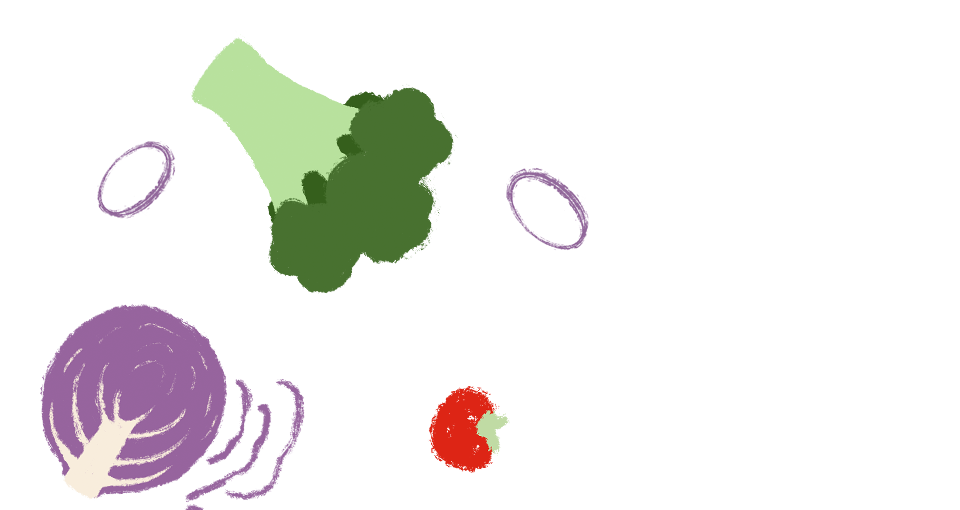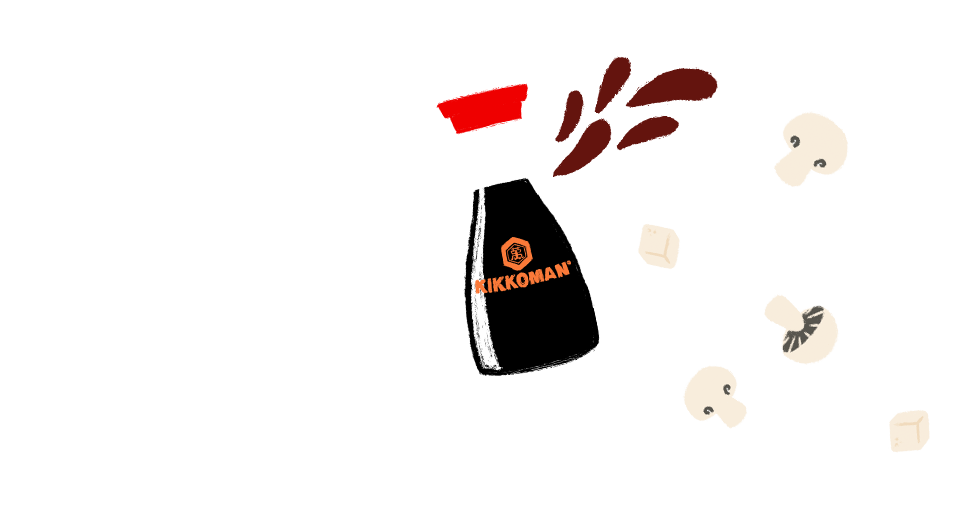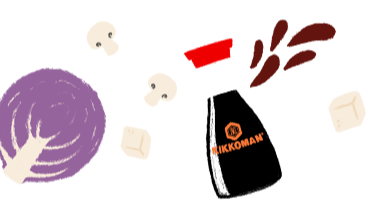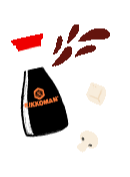What is Ramen? A Guide To Shoyu, Miso & beyond
27. February 2023

What are the typical ramen ingredients?
The base is always a broth—whether tonkotsu, shoyu, shio, miso or another kind. You’ll find out more about what sets them apart further down. Into the broth go the ramen noodles, along with some meat and/or vegetables, tofu and often an egg.
In Japan, ramen is frequently ordered with side dishes. Gyoza dumplings and fried rice with egg are especially popular, and many restaurants bundle these together as a set menu.
Ramen isn’t always vegan—but Kikkoman Ramen Soup Base is! It’s the perfect foundation for countless soup creations and also ideal for vegan cooking.
Beyond just making ramen and other soups quickly and easily at home, Kikkoman Ramen Soup Base doubles as a brilliant base for a variety of marinades and dips.
No ramen bowl would be complete without toppings. The popular classics include:
- Chashu—slices of braised or fried pork, often with a hint of sweetness.
- Kamaboko—slices of steamed fish cake.
- Tamago—a boiled or marinated egg, common in almost any ramen.
- Nori—seaweed sheets packed with nutrients that bring the briny depth ramen needs.
- Menma—seasoned bamboo shoots, sometimes fermented and pickled for extra punch.
- Sweetcorn—adds texture and subtle sweetness to ramen dishes.
Shio, shoyu, miso, tonkotsu & more: a guide to the essential ramen broths
As the broth makes up such a large part of the finished dish, it's naturally one of ramen’s most important components. However, not all broths are created equal. Here are the most popular varieties:
Shio (salt)
Shio broths, known as shio tare, are typically clear or light and usually paired with chicken, fish or vegetables. This is traditionally the lightest broth style and is used when the soup itself is meant to take centre stage.
Shoyu (soy sauce)
Shoyu ramen is one of Japan’s most traditional varieties. It features a clear, brown broth made by combining a soy sauce seasoning (shoyu tare) with a stock (dashi) based on chicken or seafood. The soup has a salty-sweet aroma and pairs beautifully with classic toppings like chashu, menma and spring onions. Originating in Tokyo, this style is beloved across generations for its well-balanced taste. Kikkoman Ramen Soup Base—soy sauce flavour—is also suitable for vegan dishes, adding genuine umami depth.
Miso
Miso paste is now a popular addition to ramen broth, giving it a distinctive, savoury taste. You can always tell when miso is used—the broth becomes opaque rather than clear. While shio and shoyu complement and enhance the broth’s flavour, miso paste creates an entirely unique and complex taste of its own.
Tonkotsu
Tonkotsu is a unique ramen broth made by simmering pork bones for hours. The result is a thick, rich, milky-white and creamy soup—quite unlike the clear varieties. It’s then seasoned with a tare (typically shio or shoyu). Though tonkotsu originated in Kyushu, where it’s known as Hakata ramen, it has since become one of the most popular and recognisable ramen styles worldwide, thanks to major restaurant chains spreading it across Japan and beyond.
Tori paitan
Tori Paitan starts with a chicken carcass—bones and meat scraps—simmered for hours until the broth turns creamy and milky. Common additions include pork belly, spring onions, carrots and of course noodles and egg.
Gyokai
This broth, also popular in Japan, is made from fish or seafood and is sometimes combined with meat-based stocks. It’s known for its especially intense umami flavour.
Tantanmen
As the name suggests, tantanmen has its origins in the Chinese dish 'dandanmian'. The base is chicken broth, soy sauce, chilli oil and sesame oil, blended into a spicy, warming soup. Ramen noodles, vegetables such as pak choi and minced meat are essential elements of the dish.
Tsukemen
What makes this ramen special is its serving style: cold noodles meet hot broth (and toppings, of course). In Japan, this variation is especially popular during the hot summer months. The noodles are served separately and dipped into the broth.
Which noodles go into the soup?
Alongside its distinctive broth, noodles are an essential part of ramen. They give the dish both flavour and substance. Here are three of the most popular types:
Ramen noodles are known for their wavy shape and firm bite. They’re usually made with alkaline water (a potassium carbonate solution), which gives them their characteristic yellow colour and helps maintain their texture so they don’t become soggy in the broth.
Udon noodles are made from wheat flour, salt and water. are characteristically white in colour and notably thick and soft. They’re usually sold pre-cooked.
Soba are traditionally made from buckwheat. They’re gluten-free and have a mildly nutty flavour. These brownish noodles, which are as thin and straight as spaghetti, need only 2–3 minutes in boiling water to cook.

Origin and history of ramen
Ramen originally came from China. In the 19th century, Chinese immigrants brought the concept of noodle soup to Japan, particularly via the trading port of Yokohama. The first dedicated ramen restaurant opened in Tokyo in 1910, and around 1950 the famous white, milky tonkotsu broth was created by chance in Fukuoka. After the Second World War, ramen saw a boom—thanks to the renewed availability of wheat and the rise of street food stalls—becoming an inexpensive, tasty meal for all. The invention of instant noodles eventually sparked the global ramen boom that continues to this day: Japan is now home to over 24,000 ramen restaurants, with roughly 5,000 of them in Tokyo alone.
The word 'ramen' is Japanese but—just like the dish itself—has Chinese roots. It derives from the Chinese term 'lāmiàn', literally meaning 'pulled noodles: 'lā' = to pull or stretch, 'miàn' = noodles. Originally, the term referred to hand-pulled wheat noodles from China. In Japan, it evolved into the modern 'ramen'—a word describing the entire dish of noodles in broth with various toppings, not just the noodles themselves.
Ramen from around the world: regional variations
Ramen has been growing in popularity across Europe over the past two decades. In London, for example, tonkotsu ramen has seen a real boom. In Düsseldorf—home to Europe’s largest Japanese community—there’s an abundance of Japanese supermarkets and restaurants, and ramen has long become a cult dish. Alongside classic styles, Europe is seeing a rise in creative interpretations, especially vegan and gluten-free versions based on shoyu or miso, tailored to European dietary preferences.
Across Asia too, new ramen varieties are constantly emerging. In South Korea, kimchi ramen is hugely popular, often topped with melted cheese, while Thailand offers aromatic peanut and coconut soups, frequently made with tofu instead of meat. Even dishes such as Vietnamese pho—which uses rice rather than wheat noodles—show just how diversely the concept of 'noodles in broth' can be interpreted. And it’s not just across Asia—Japan itself has countless regional variations.

Recipes: how to make ramen
When making ramen, you start with the broth—either from scratch, which can take several hours, or by using a ready-made soup base such as Kikkoman’s. The toppings and noodles are then cooked directly in the hot broth, adding the ingredients that take longest to cook first.











![[Translate to Englisch (EU):] [Translate to Englisch (EU):]](https://www.kikkoman.eu/fileadmin/_processed_/9/4/csm_Blogpage_How_To_Master_Velveting_Desktop-Header_f36d5cca18.webp)

![[Translate to Englisch (EU):] [Translate to Englisch (EU):]](https://www.kikkoman.eu/fileadmin/_processed_/c/5/csm_MainDishes_recipe-collection_desktop_2x_ef5962097e.webp)
![[Translate to Englisch (EU):] [Translate to Englisch (EU):]](https://www.kikkoman.eu/fileadmin/_processed_/c/d/csm_1039-recipe-page-Easy-Carrot-soup_mobile_7366116d92.webp)
![[Translate to Englisch (EU):] [Translate to Englisch (EU):]](https://www.kikkoman.eu/fileadmin/_processed_/b/e/csm_1101-recipe-page-Authentic-Japanese-soy-sauce-ramen_mobile_6bf05afcae.webp)
![[Translate to Englisch (EU):] [Translate to Englisch (EU):]](https://www.kikkoman.eu/fileadmin/_processed_/e/b/csm_918-recipe-page-pumpkin-hummus_mobile_d372eb934b.webp)




